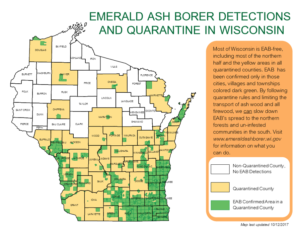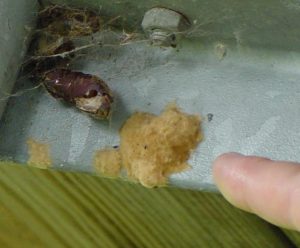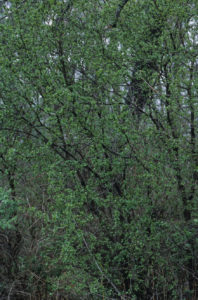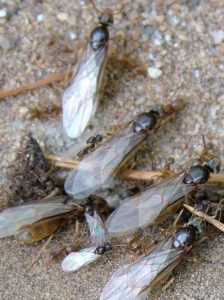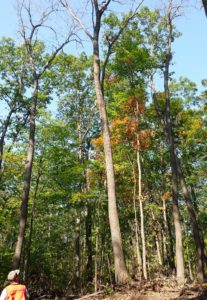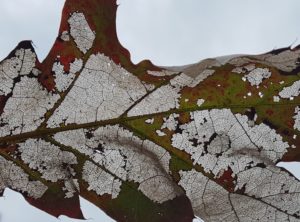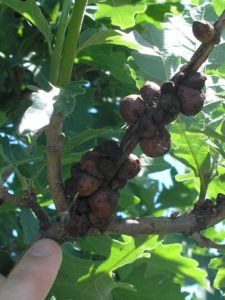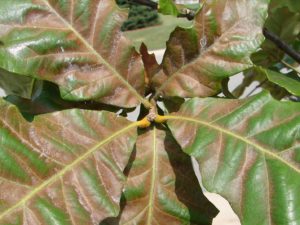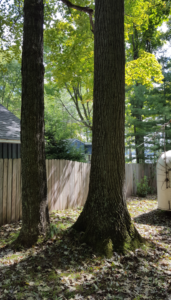
This oak tree near Pelican Lake dropped leaves due to Cylindrosporium both in 2011 and again this year. This will not cause mortality of the tree.
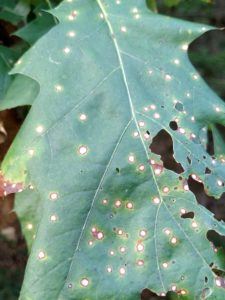
The small round leaf spots characteristic of infection by Cylindrosporium fungi.
In September and October, I visited several northern red oaks that were dropping leaves, but none of them looked like they had oak wilt. The dropped leaves were still green but had many perfectly round tan dots on their surface. I collected some leaves and sent them into the lab to verify the causal agent. One of these trees had shown similar symptoms in 2011. At that time, Brian Schwingle (who has since taken his forest health skills to the Minnesota DNR) looked at it and diagnosed Cylindrosporium leaf spot. I suspect the same this year. I’ve found trees of all ages with similar leaf spots in Marinette, Oconto, Oneida, Vilas, and Waupaca counties. Impacted trees often dropped some of the infected leaves, although a lot of green leaves (with additional leaf spots) remained on the tree. These trees should leaf out normally next year.
Written by: Linda Williams, forest health specialist, Woodruff, (Linda.Williams@wisconsin.gov), 715-356-5211 x232.
